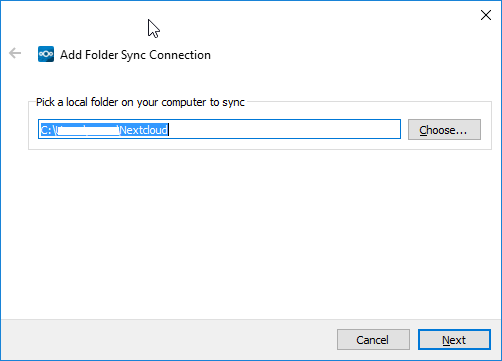This article is for IT admins managing the OneDrive sync app.
There are two primary advantages of moving or redirecting Windows known folders (Desktop, Documents, Pictures, Screenshots, and Camera Roll) to Microsoft OneDrive for the users in your domain:
Your users can continue using the folders they're familiar with. They don't have to change their daily work habits to save files to OneDrive.
Saving files to OneDrive backs up your users' data in the cloud and gives them access to their files from any device.
For these reasons, we recommend moving or redirecting known folders to OneDrive if you're an enterprise or large organization. See all our recommendations for configuring the sync app. Small or medium businesses may also find this useful, but keep in mind you'll need some experience configuring policies. For info about the end-user experience, see Protect your files by saving them to OneDrive.
Prepare to move known folders on existing devices
Each time a file or folder is created/updated/deleted in the monitored directories or their sub directories, RealTimeSync waits until a user-configurable idle time has passed in which no further changes were detected, and then runs the command line. This makes sure the monitored folders are not in heavy use when starting a synchronization.
We recommend that you upgrade to the latest available build before you deploy to decrease deployment issues. Known Folder Move doesn't work for users syncing OneDrive files in SharePoint Server.
- EaseUS EverySync is a professional file sync, backup, data replication, PC synchronization software to synchronize files and folders between computers, Google Drive, SkyDrive, Dropbox, FTP Server, network share on Windows 10/8/7/Vista/XP and Windows Server 2012/2008/2003. Free download file sync software now.
- Synkron is an open source folder sync software. This multi platform folder synchronization.
To check eligibility on existing devices, data volume, and item counts as you decide on a rollout plan, and to later monitor progress of the rollout, use the Known Folder Move PowerShell script.
Important
If your organization is large and your users have a lot of files in their known folders, make sure you roll out the configuration slowly to minimize the network impact of uploading files. For users who have a lot of files in their known folders, consider using the policy Limit the sync app upload rate to a percentage of throughput temporarily to minimize the network impact and then disable the policy once uploads are complete.
About the Known Folder Move policies
OneDrive policies can be set using Group Policy, Intune Windows 10 Administrative Templates, or by configuring registry settings. For a full reference of available policies and their registry settings, see Use OneDrive policies to control sync settings.
The following policies control the Known Folder Move feature:
Use this setting to give the users a call to action to move their Windows known folders.
If users dismiss the prompt, a reminder notification will appear in the activity center until they move all known folders or an error occurs with the move, in which case the reminder notification will be dismissed.
If a user has already redirected their known folders to a different OneDrive account, they'll be prompted to direct the folders to the account for your organization (leaving existing files behind).
Important
We recommend deploying the prompt policy for existing devices only, and limiting the deployment to 5,000 devices a day and not exceeding 20,000 devices a week.
Use this setting to redirect and move known folders to OneDrive without any user interaction. Move all the folders or select the desired individual folders. After a folder is moved, the policy will not affect the folder again, even if the selection for the folder changes.
Note
You can choose to display a notification to users after their folders have been redirected.
A number of errors can prevent this setting from taking effect, such as:
- A file exceeds the maximum path length
- The known folders aren't in the default locations
- Folder protection is unavailable
- Known folders are prohibited from being redirected
For info about these errors, see Fix problems with folder protection.
Important
We recommend deploying the silent policy for existing devices and new devices while limiting the deployment of existing devices to 1,000 devices a day and not exceeding 4,000 devices a week. We also recommend using this setting together with 'Prompt users to move Windows known folders to OneDrive.' If moving the known folders silently does not succeed, users will be prompted to correct the error and continue.
Use this setting to force users to keep their known folders directed to OneDrive.
Note
Users can direct their known folders by opening OneDrive sync app settings, clicking the Backup tab, and then clicking Manage backup.
For info about using the OneDrive policies, see Use Group Policy to control OneDrive sync app settings.
Transition from the Windows Folder Redirection Group Policy objects
The OneDrive Known Folder Move Group Policy objects won't work if you previously used Windows Folder Redirection Group Policy objects to redirect the Documents, Pictures, or Desktop folders to a location other than OneDrive. The OneDrive Group Policy objects won't affect the Music and Videos folders, so you can keep them redirected with the Windows Group Policy objects. Follow these steps to switch to using the Known Folder Move Group Policy objects.
If folders have been redirected to OneDrive using Windows Folder Redirection Group Policy:
- Disable the Window Folder Redirection Group Policy and make sure to leave the folder and contents on OneDrive.
- Enable KFM Group Policy. Known folders remain in OneDrive.
If folders have been redirected to a location on a local PC:
- Disable the Window Folder Redirection Group Policy and make sure to leave the folder and contents at the redirected location.
- Enable KFM Group Policy. Known folders move to OneDrive.
If folders have been redirected to a network file share:
Note
We recommend using Windows 10 Fall Creators Update (version 1709 or later) or Windows Server 2019 and the current version of OneDrive to get the benefits from Files On-Demand.
- Use a migration tool to copy contents in the network file share location to a user's OneDrive, making sure that all contents go into the existing Documents, Pictures, or Desktop folders.
- Disable the Window Folder Redirection Group Policy and make sure to leave the folder and contents on the network file share.
- Enable KFM Group Policy. Known folders move to OneDrive and will merge with the existing Desktop, Documents, and Pictures folders which contain all the file share content that you moved in the first step.
CodeTwo FolderSync Addin is an Outlook add-in that lets you synchronize data between Outlook folders. The synchronization process always takes place between selected folders only, and the user can choose several pairs of folders he or she needs to be synchronized.
Please note that if you have Exchange Server in your organization and you want to synchronize its folders (from any mailbox) automatically giving the administrator control over all the synchronization tasks, download a trial version of CodeTwo Exchange Sync here. The application can synchronize data between selected folders in real time while being totally transparent to the end-users. Any changes made in one folder are instantly and automatically copied to the folders selected by an administrator.
DownloadSee other free tools

Please note! This is NOT a mobile app so please do not install it on your mobile device. Download the program and install it on your PC with Microsoft Outlook.
How to use the program?
Upon installation, CodeTwo FolderSync Addin integrates with Outlook and adds a new button to the Outlook menu, and a new tab in Outlook options.
Folder Sync
The program Settings window enables the user to select which folders should be synchronized. Clicking the 'Synchronize' button initiates the synchronization process.
To choose which folders should be synced:
- In Outlook 2007 (and earlier versions) choose: Tools, Options and choose the CodeTwo FolderSync Addin tab.
- In Outlook 2010 (and newer versions) go to: File,Backstage view and click the program's tab.
Clicking the Add button opens a new dialog box where the user can select a pair of folders that need to be synced. Please note that this will be a two-way synchronization - the data from folder 1 will be transferred to folder 2, and vice versa.
When pairs of folders have been selected, click the program's button in the toolbar or the ribbon to run the synchronization. A log screen will display showing the synchronization details. The synchronization can be terminated at any time and resumed by clicking the toolbar button.
During the synchronization process, the program does not compare the data in selected folders. However, it does store IDs of previously synced items. Therefore, during the first synchronization of two folders, a sum of their contents is created in both of them. All items from folder 1 will be transferred to folder 2, and similarly the data from folder 2 will be added to folder 1. If prior to the first synchronization, both folders contain identical items, these items will be duplicated and must be removed manually.
Folder Synchronization
If a pair of folders has been synchronized and in both folders some changes are made at the same time on the same item, the item that has been modified later will prevail if the folders are synchronized again.
